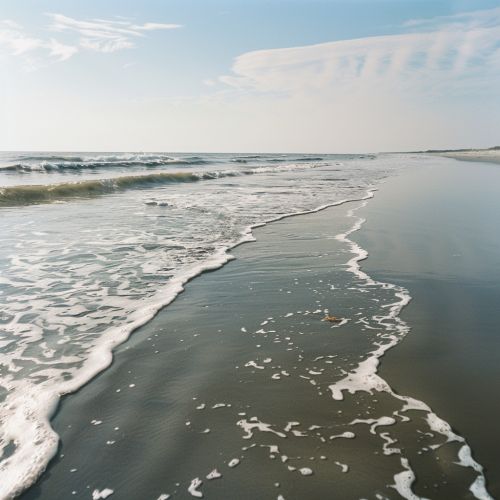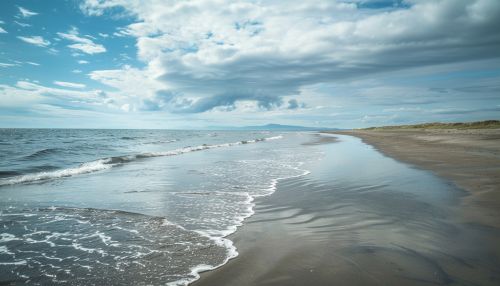Tide
Introduction
Tides are the rise and fall of sea levels caused by the combined effects of the gravitational forces exerted by the Moon and the Sun, and the rotation of the Earth. Tides are one of the most reliable phenomena in the world. As the sun rises in the east and the stars come out at night, we are confident that the ocean waters will regularly rise and fall along our coasts.


Understanding Tides
Tides are very long-period waves that move through the oceans in response to the forces exerted by the moon and sun. Tides originate in the oceans and progress towards the coastlines where they appear as the regular rise and fall of the sea surface.
When the highest part, or crest of the wave reaches a particular location, high tide occurs; low tide corresponds to the lowest part of the wave, or its trough. The difference in height between the high tide and the low tide is called the tidal range.
Causes of Tides
Tides are caused by the gravitational interaction between the Earth and the Moon. The gravitational attraction of the moon causes the oceans to bulge out in the direction of the moon. Another bulge occurs on the opposite side, since the Earth is also being pulled toward the moon (and away from the water on the far side).
Because the Earth's tides are primarily caused by the moon, they are called Lunar Tides. The sun also affects tides, but its pull on the Earth is less powerful than the moon's. When the sun, moon, and Earth are in alignment (at the time of the new or full moon), the solar tide has an additive effect on the lunar tide, creating extra-high high tides, and very low, low tides—both commonly called Spring Tides.
Types of Tides
There are three basic types of tides: Diurnal, Semidiurnal, and Mixed.
Diurnal Tides have one high tide and one low tide per day. Semidiurnal Tides, which are most common, have two high tides and two low tides per day. Mixed Tides usually occur along the west coast of North America and on many islands in the Pacific Ocean. These tides are characterized by wide variations in heights of successive high and low waters and by longer tide periods.
Tidal Patterns
Tidal patterns vary in bays, seas, and along coastlines around the world. These variations are due to geographic location, the shape of coastlines, ocean depths, and other factors.
In the open ocean, tides are very small, but they become amplified as they move towards the coast. The shape of bays and estuaries can also magnify the intensity of tides. Some coastlines, such as the Bay of Fundy in Canada, experience very high tides because of this amplification effect.
Tides have a very significant role in the maritime world. The high and low tides can affect the depth of the water, and therefore, it can affect navigation and shipping. Ships, for example, can only pass through some channels during high tide, while at low tide, some areas may be too shallow for vessels to navigate.
Tides and Marine Life
Tides also have a significant impact on marine life. Many marine organisms rely on tides for breeding and feeding. For example, some species of fish use the incoming high tide to move into shallow feeding grounds and then ride the outgoing tide back out to sea.
Tides and Energy
Tides have also been used as a source of renewable energy. Tidal Energy is a form of hydropower that converts the energy of tides into electricity or other useful forms of power. Although not yet widely used, tidal energy has potential for future electricity generation.
